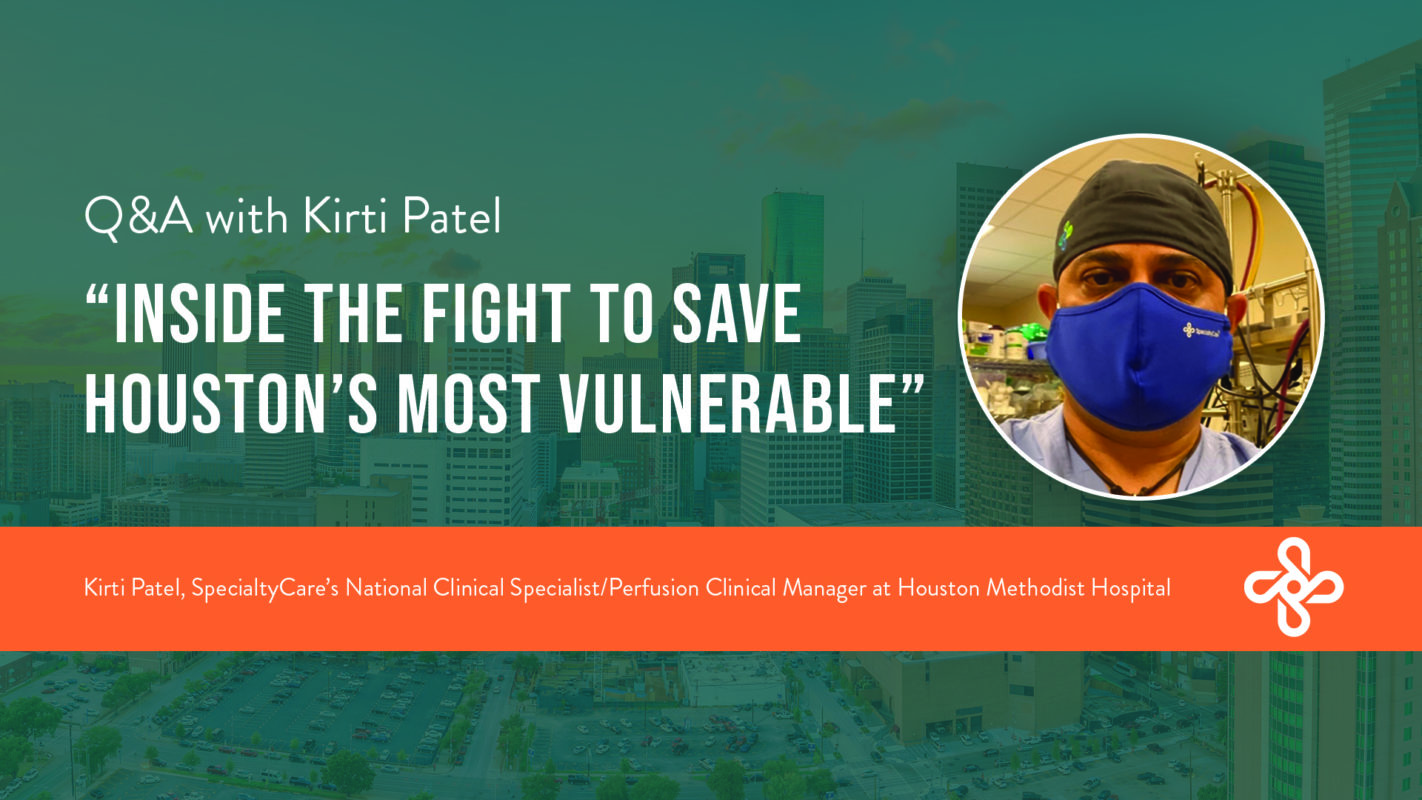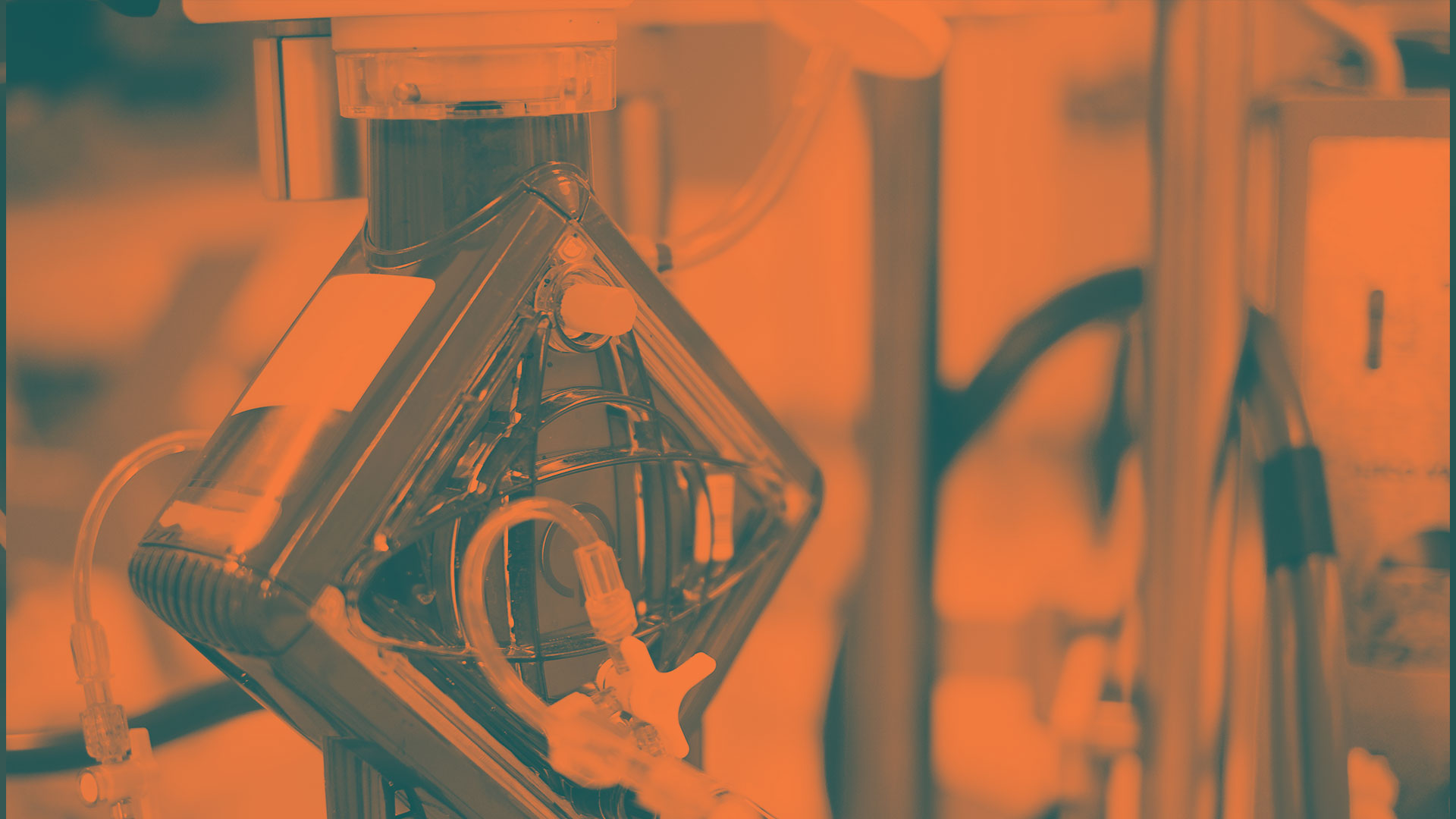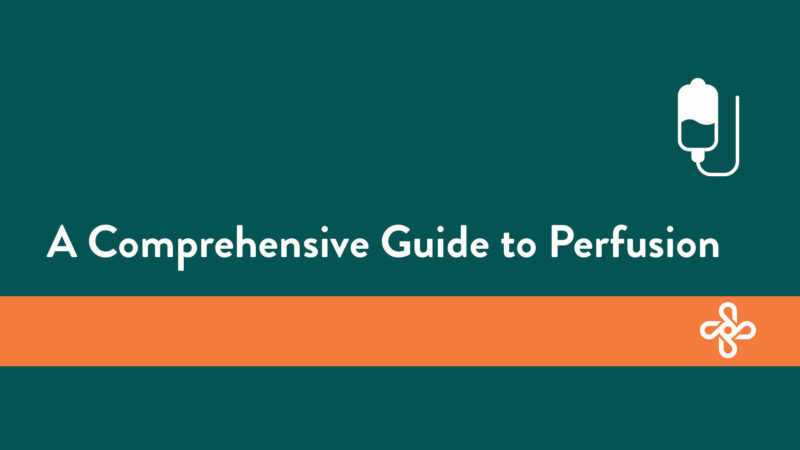
SpecialtyCare is honored to be a partner of Houston Methodist Hospital, working alongside their medical teams to provide perfusion services during cardiac surgery and extracorporeal membrane oxygenation (ECMO) support for patients including those afflicted with COVID-19. Recently, the New York Times was given access to the COVID medical I.C.U. at Houston Methodist. The article, written by Sheri Fink, Emily Rhyne, and Erin Schafftitled titled “Inside the Fight to Save Houston’s Most Vulnerable,” featured the background stories of five patients, how the staff is working to heal them, how this has affected their families, and where their care stands when the article was published. While the healthcare professionals treating these patients consists of a myriad of clinical professionals such as physicians, nurses, perfusionists, ECMO specialists, respiratory therapist, and a vast number of other healthcare workers, we wanted to bring a unique look into the important role our perfusionists play in these patient’s care, alongside the entire medical team.
We asked Kirti Patel, MPS, MPH, CCP, LP, CPBMT, National Clinical Specialist-Perfusion Clinical Manager at SpecialtyCare a group of questions to give us an inside look into the role of perfusionists and ECMO specialists perform at Houston Methodist and what this time has been like for healthcare workers.
Over the past few months, it’s no secret Houston has experienced a surge in COVID cases. What has it been like for the team working on the front-line and seeing firsthand the uptick of these patients come through the door?
The challenges and concerns providing care for these patients escalated as cases of COVID-19 surged in the Texas Medical Center from availability of ICU space to various resource availabilities. One thing is for certain that we have all come together and continue this fight.
The surge of COVID-19 cases has been overwhelming within tertiary care centers and especially for healthcare workers. While there are many challenges providing care to these patients that we are all aware of, the emotional aspect is probably one that has been the most difficult. Limiting family visitations and seeing the loss of life without a loved one by their side has been the most difficult emotional toll on us as healthcare providers. We all realize that this is a necessary evil to protect all involved; however, it hasn’t made it any easier.
For those who are not familiar, can you briefly explain the role you as a perfusionist play providing clinical care to COVID-19 patients? What is it like to play such a crucial role in providing this care while working alongside the entire medical team?
We as perfusionists play a crucial role in providing care to critically ill COVID-19 patients who are unable to be managed on a ventilator and require additional cardiopulmonary support. When traditional therapies fail, ECMO is often used as a bailout strategy. It is important to remember that ECMO is not a treatment, but a means of providing clinicians more time to manage and treat these patients. ECMO can be utilized in a form as veno-veno (VV) or veno-arterial (VA). VV ECMO is used when additional respiratory or pulmonary support is needed beyond the ventilator and VA is used when cardiac support is necessary. When critically ill COVID-19 patients develop acute respiratory distress syndrome (ARDS) it may require support beyond mechanical ventilation. When this is the case, the most severe patients go on to ECMO which provides clinicians more time to continue their treatment. VV ECMO is the most common form of ECMO in the critically ill COVID-19 patients as they develop ARDS. The main goal of placing them on VV ECMO is to provide them not only artificial support, but to allow their lungs to “rest.” When ventilator settings are “maxed out,” it usually places a tremendous amount of “pressure or barotrauma” on the lungs, which can cause further injury to the already damaged lung tissue. When ECMO is initiated, the ventilator settings are “reduced” to allow the lungs to rest and heal. ECMO has been successfully used in these patients as demonstrated by national and international data (SpecialtyCare and Extracorporeal Life Support Organization) indicating that approximately 50-60% of COVID-19 patients that are placed on ECMO have been discharged alive.
Our responsibilities for managing these patients include initiation of ECMO, bedside monitoring, device management, transportation of patients while on ECMO to various locations for diagnostics or procedures and troubleshooting when circuit function changes. At our institution, we are fortunate to have highly trained ECMO Specialists, who are critical care nurses and are primarily responsible for bedside monitoring. We work very closely with them in taking care of these patients on ECMO. While it is very rewarding being part of a multi-disciplinary team taking care of these critically ill patients, It is stressful and tasking managing these ECMO patients especially when there are many patients on ECMO at the same time. Most of the time, we are requiring at least 2-3 ECMO specialists/perfusionists to monitor these patients around the clock since mid-March.
With Houston Methodist seeing COVID-19 patients for several months, how important is the research aspect of COVID-19 and ECMO treatment?
Houston Methodist has been on the frontlines of evolving research concerning COVID-19 pandemic. While the clinicians have been busy managing patients, the Houston Methodist’s Academic Institute has been dedicating their efforts in coordinating clinical trials, producing PPE, ventilators, developing vaccines and treatments and other critical medical technologies. The institution has been a big part in many medication clinical trials, has developed autoclave protocols for safe reuse of N95 masks, development of innovative helmets to avoid intubation, and aerosol design shields to protect clinicians during intubation. Houston Methodist was also the first academic medical center in the nation to receive FDA approval for convalescent plasma therapy. Additionally, with limited guidelines surrounding treatment, the institution is developing protocols for management strategies and measuring outcomes for treating COVID-19, as there is an urgent need for effective, evidence-based guidelines.
What does it mean to you for the stories of these patients, the “behind the scenes” footage from inside the hospital, and the care the patients are receiving to be featured on a national publication such as the New York Times?
It’s very rewarding for us to share stories of our patients and our experiences. Most importantly, it gives hope to those that need it and it gives a sense of how infectious this virus is to those that are letting their guard down. While this pandemic has turned all our lives upside down, there are many organizations with outstanding clinicians, leadership, scientists, and researchers that have worked tirelessly to combat this enemy but I have no doubt in my mind that in the end, we will prevail.
The pandemic has been taxing for everyone, but especially for front-line workers. How does the team support each other when being dealt with these incredibly tough circumstances?
The foundation of the team really becomes important in challenging times and we are especially blessed to have such dedicated individuals in all aspects of care. A cohesive team makes any difficult situation easier. Our team is always there for each other and in need, we all step up to assist because, in the end, we all have the same goal; which is to provide the best care we can for our patients, while taking care of each other in a safe and effective manner. Our perseverance, commitment, compassion, dedication, and our motivation to care for our patients keeps our team working together.
Any additional thoughts?
I urge all communities to continue practicing social distancing, hand hygiene, and wearing face masks. We have placed tremendous efforts into safety and we need to be cautious and not let our guard down regardless of the decline of cases that we may be experiencing. It is important for each of us to be mindful and do our part as the only way to combat this virus is with us all working together.



Comments are closed.